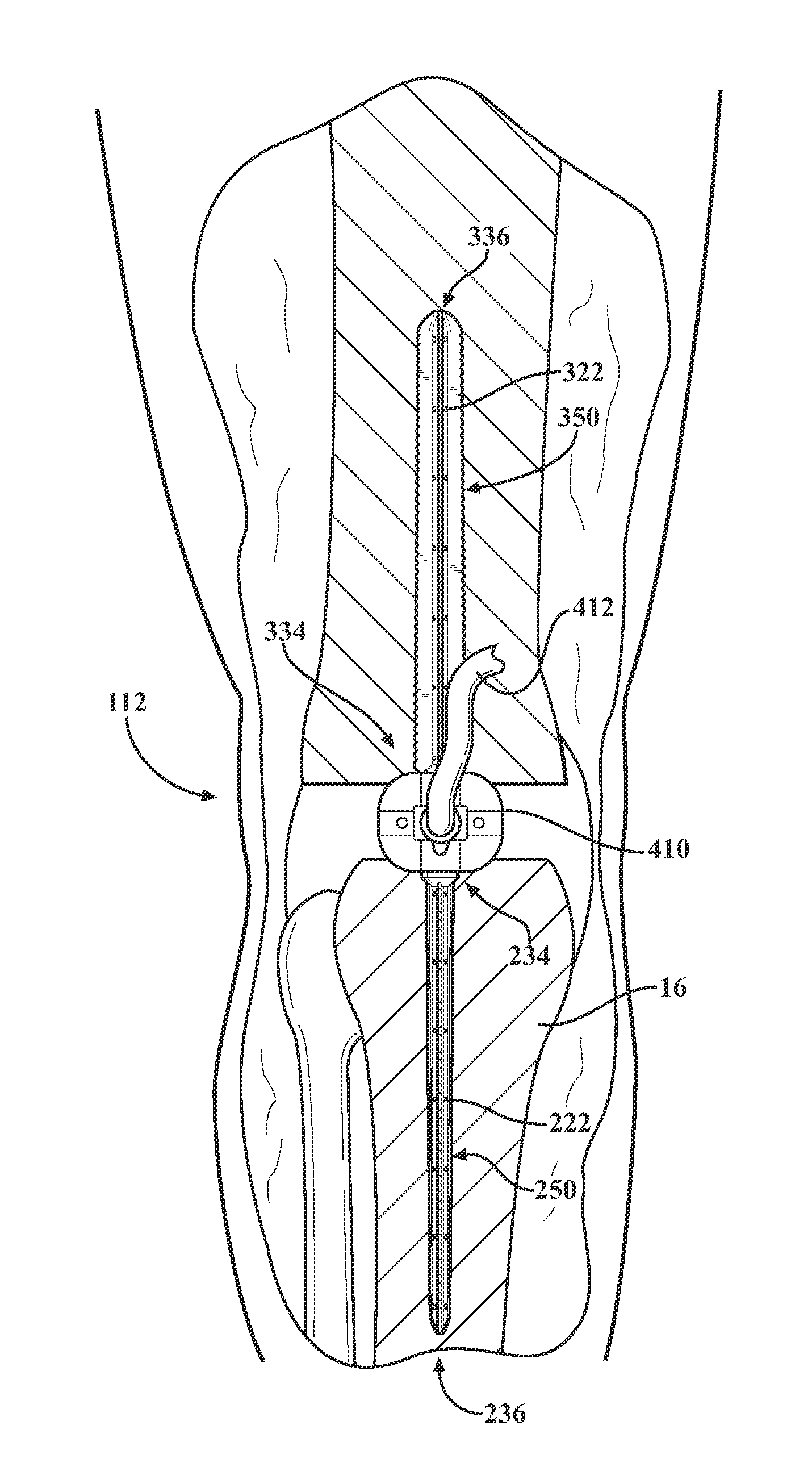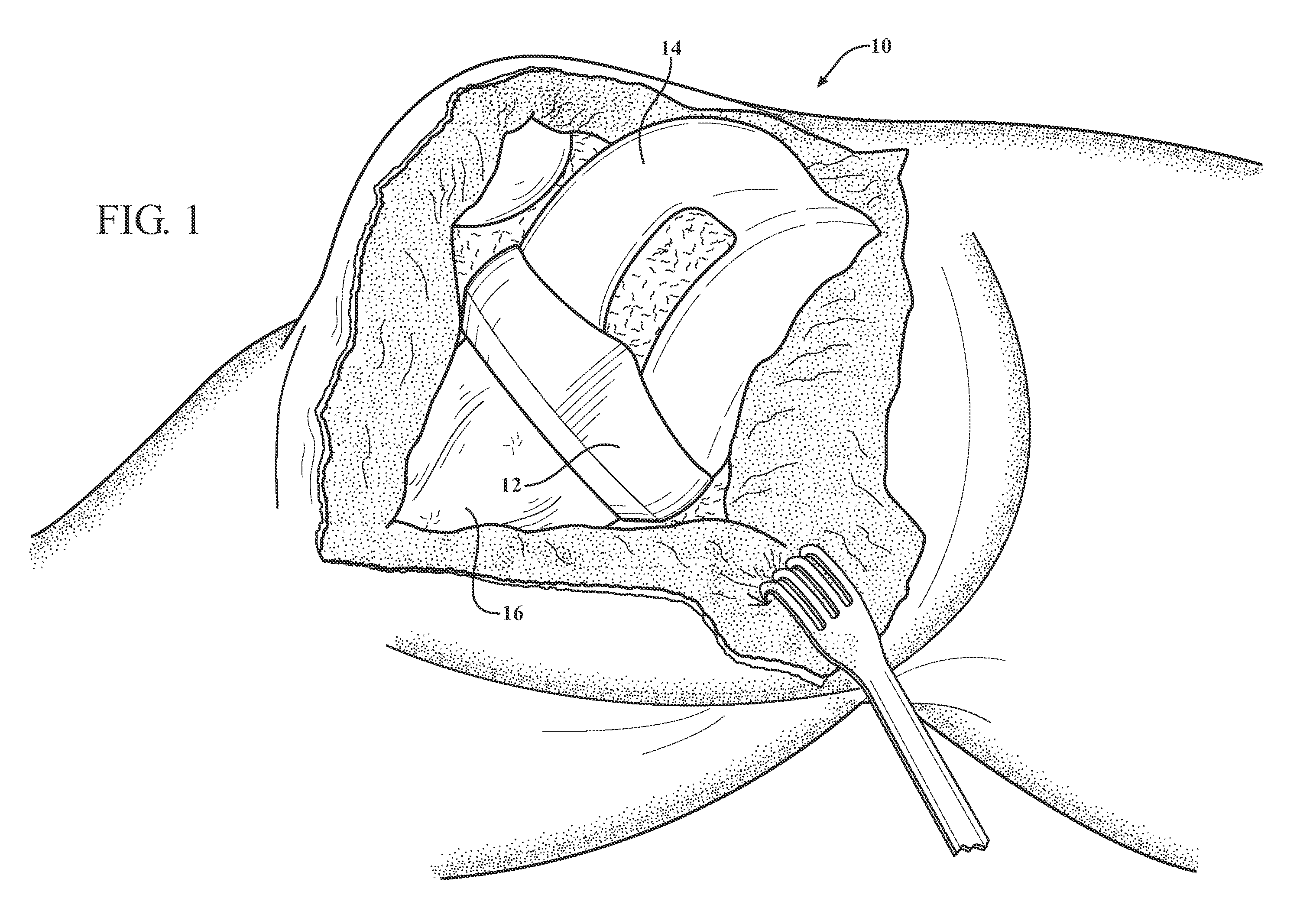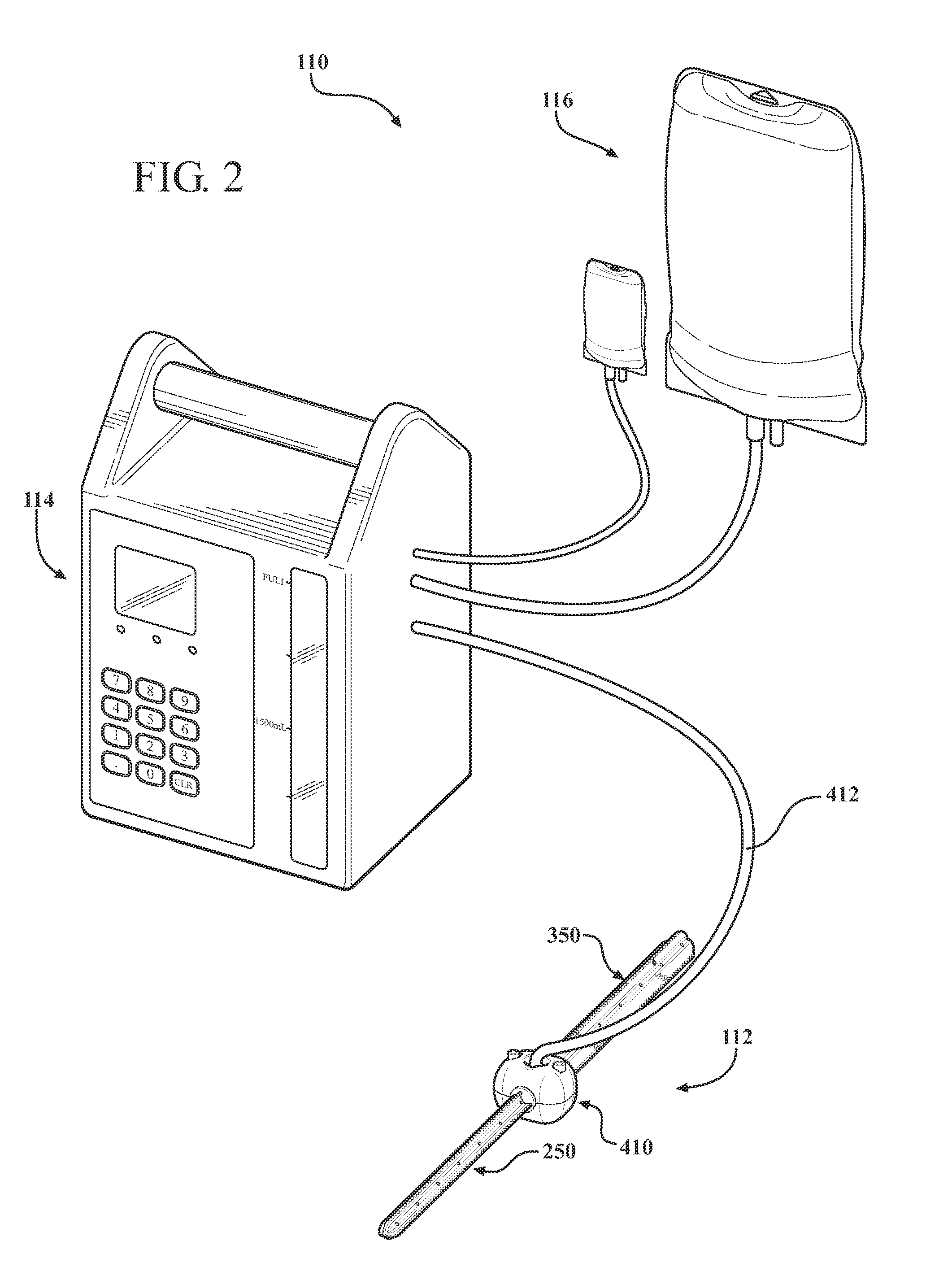Antibiotic delivery system and method for treating an infected synovial joint during re-implantation of an orthopedic prosthesis
a synovial joint and antibiotic technology, applied in the field of antibiotic delivery system, can solve the problems of uncontrollable antibiotic release by bone cement, and devastating complications of infection, and achieve the effects of improving increasing the cost of operation, and being quite costly to us
- Summary
- Abstract
- Description
- Claims
- Application Information
AI Technical Summary
Benefits of technology
Problems solved by technology
Method used
Image
Examples
Embodiment Construction
[0035]One embodiment of an antibiotic delivery system according to the present invention is generally indicated at 110 in FIG. 2, where like numerals are used to designate like structure throughout the figures. The antibiotic delivery system 110 includes an implant assembly, generally indicated at 112, a pump, generally indicated at 114, and a source of fluid-borne antibiotic, generally indicated at 116. The antibiotic implant assembly 112 forms one component of the antibiotic delivery system 110. One of the assembly's basic components includes an intramedullary stem. One embodiment of the intramedullary stem is generally indicated at 118 in FIGS. 3-5. In the case of a total knee replacement, the assembly 112 includes a tibial intramedullary stem, generally indicated at 250, and a femoral intramedullary stem, generally indicated at 350 in FIGS. 7-12. Each of these components will be described in greater detail below.
[0036]More specifically, various features of the intramedullary ste...
PUM
 Login to View More
Login to View More Abstract
Description
Claims
Application Information
 Login to View More
Login to View More - R&D
- Intellectual Property
- Life Sciences
- Materials
- Tech Scout
- Unparalleled Data Quality
- Higher Quality Content
- 60% Fewer Hallucinations
Browse by: Latest US Patents, China's latest patents, Technical Efficacy Thesaurus, Application Domain, Technology Topic, Popular Technical Reports.
© 2025 PatSnap. All rights reserved.Legal|Privacy policy|Modern Slavery Act Transparency Statement|Sitemap|About US| Contact US: help@patsnap.com



